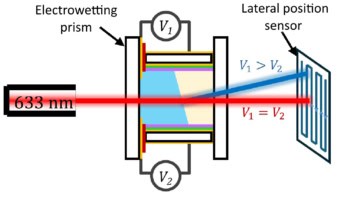Researchers in Japan have used carbon nanotubes to make thermometers by filling them with liquid gallium. The nanothermometers will greatly increase the range of temperatures that can be measured in microscopic systems. With a diameter of 75 nanometres, the thermometers could be used in a wide variety of micro-environments (Y Gao and Y Bando 2002 Nature 415 599).
Working at Japan’s National Institute for Materials Science, Yihua Gao and Yoshio Bando found that the height of a column of liquid gallium in a nanotube varies linearly with temperature, just as mercury does in conventional thermometers. This allows the temperature to be read in situ using a scanning electron microscope to measure the height of the gallium meniscus.
The researchers found that the gallium inside the nanotubes expands rapidly as the temperature rises – just as gallium does on a macroscopic scale – although its melting point varies greatly at different size scales. In contrast with gallium, the walls of the carbon nanotube expand very little as the temperature rises. On a microscopic scale, gallium is a liquid over a large range of temperatures, and this gives the nanothermometer a measuring range of 323 – 823 kelvin, compared with the range of 4 – 80 kelvin covered by existing nanoscale thermometers.
The nanothermometers were made using a radiofrequency furnace to react gallium oxide vapour with carbon monoxide vapour in a carbon crucible, under a flow of nitrogen gas, at a temperature of 1073 kelvin.
Carbon nanotubes are sheets of graphite molecules rolled into a cylinder and capped at both ends, formed by heating carbon. Along their length they are as strong as diamond.



